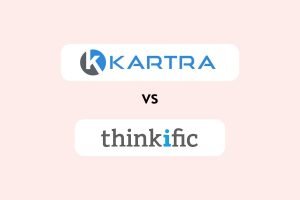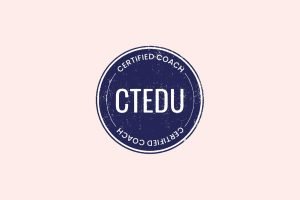Last updated on June 6, 2023
Like most coaches, I’ve struggled at every phase of building my coaching practice over the past 12 years. From clients ghosting to having anxiety about my price, to feeling overworked and underpaid, to feeling like I’m a great coach but I can’t get clients—and every frustrating thing in between.
About six years ago, on the verge of becoming a first-time dad, I realized I didn’t like my “job” anymore and felt like I was working too hard for not enough money.
Yet here I am, still coaching… but now from a place of greater confidence, deeper satisfaction, and with the freedom to spend my time on what matters most. The turning point was when I made a major shift in my practice and discovered how to get high-ticket coaching clients.
I took a hard look at the design of my coaching business and completely reinvented my offering, my pricing and structure, and, most importantly, my enrollment process. One year later, I had doubled my coaching business and found a renewed sense of joy and fulfillment in my work, and have continued to grow ever since.
What follows are the lessons I’ve learned (the hard way!), shared in the hope that you, too, can devise a coaching practice that is financially rewarding and fulfilling.
Lesson 1: Let go of control
Coaches take many tactics in their efforts to gain clients, and even more so in trying to attract high-ticket clients. Maybe you’ve tried to solve this problem by hiring social media marketers, or a lead generator from LinkedIn, or finally committing to publishing regular blogs and videos, or creating a slick new website.
I have been there and done all of that. I built new websites, I filmed fancy videos, and hired a very expensive content marketer (zero results). I strategized about recurring revenue, passive income streams, and selling e-products.

I’ve done all of it because I was terrified of the one true fact about having a high-integrity coaching business:
No matter what you do, you cannot control getting hired.
Whether a client hires you is their decision, not yours.
What you can control is the process that leads to effective client generation (more on that below).
It starts with being unattached to the outcome of courting a potential client.
Being unattached isn’t just a mind trick.
It happens by employing and trusting a client generation process and letting go of the idea—forever—that you can control getting hired.
Takeaway: Let Go of Control – You can’t control getting hired, so stop trying. Instead, focus on your client generation process and making a massive difference for the person in front of you. (If you need more inspiration on this, read Prosperous Coach.)
Lesson 2: Re-evaluate your expectations for sample sessions
Once you’ve established a connection with a prospect, the typical next step is to have what most in the coaching industry call a “sample session,” also known as a “discovery session.”
What is a “sample session”? For years, I related to a sample session as something similar to a food sample at Costco, where the prospect gets a “taste” of coaching to see if they like it. And my job as the coach was to give them a really good “taste” of coaching, to show them how valuable and smart and impactful I was as a coach.
It starts with being unattached to the outcome of courting a potential client.
This is one of the biggest mistakes I made in building my coaching practice for many years, and my track record was abysmal: hit or miss, with too many misses.
Then I realized what a “sample session” was really for…
A sample session is really only for one thing, which is to help the client get present to what they want, what they are deeply yearning for, so much so that they would bother spending thousands of dollars to hire a coach.
Your effectiveness with getting hired is directly related to how effectively you uncover what the person wants. Not how deep you go, not how well you distinguish their gaps, and not how good you make them feel. Always and only, it’s about identifying what results the client wants in their life.
If nothing else, promise me, from here on out, you will never again fall into the trap of proving your coaching chops in a sample session…
The only purpose of a sample session is to help the client clarify what they want.
Takeaway: Avoid Sample Session Agony – Powerful sample sessions that deeply serve your prospective client and lead them to actually hiring you are always and only about one thing: clarifying what the person really wants. The more deeply you clarify what they really want, the more inspired they will be to take action to get it (like hiring you).
Lesson 3: Make your coaching more buyable
Coaching is one of the most difficult things to sell because it is an incredibly intangible thing at a high price point. This requires a greater level of attention to the subtleties in the sales process and the product you are selling.
Imagine going to a car dealer (where there were no cars and you had never seen one of their products) and the car salesperson saying, “I have a vehicle that will transport you. It will cost you $25,000. It’s real good and people like it.” The salesperson might even say nice things to you that make you feel good.
Would you buy that? Of course not. You’d have so many questions. “Is it a car, truck, van, suv, snowmobile, four-wheeler? Horse? What kind of interior? How fast is it? Electric or gas? What brand?”
You get the point.
But oftentimes when we are sharing about our coaching service, this is how we leave our potential customer, hoping they will say yes, simply on faith. Sometimes they do. Many times they don’t. Addressing this gap in your enrollment process will help you convert more prospects to clients at higher price points.
Coaching is one of the most difficult things to sell because it is an incredibly intangible thing at a high price point.
Here’s another complicating factor: As coaches, we are constantly subjected to a barrage of marketing about creating our signature program, packages, and many other “musts” of how we sell our product. We often get so caught up in picking out the fancy wrapping paper that we lose sight of the real gift: the genuine work we do with clients.

If you offer clients an authentic program that is based in your unique work, and you communicate what you do in a way that puts the prospect at ease and builds confidence in knowing that, indeed, you can help them get what they want, that’s a guaranteed contract.
Takeaway: Reveal to Clients the Real Work You Do, Not Just the Wrapping – Making your coaching service more buyable is about filling in the details about what you already do and helping the prospect visualize your process so they better understand exactly what they are buying and how it will work for them.
Lesson 4: Stop charging for time, start charging for the value you provide
If you’re of high integrity, value authenticity, and care about people, you have probably wrestled with how much to charge. You have courageously upped your rate here and there. Yet you’ve also held on to stragglers at your introductory rate, at your own expense.
Or, you may have fallen victim to the idea that you could fix your coaching practice by charging the higher rate that other people are getting. You think, “I’m just as good as they are, why not charge what they’re charging?”
But it doesn’t work, because your heart ️ isn’t in it and you’re too high integrity for something your heart ️ isn’t in.
The key is learning how to position your coaching in a way that both you and the prospect are connected to the value you provide rather than the time you spend.
Pricing your time sounds like: “I charge $800 per month for four 1-hour sessions per month with a six-month minimum.”
Even though you aren’t saying it directly, most of us coaches think about how that translates to an hourly rate—and your prospect is definitely thinking that. In addition, when you position it this way, the prospect’s mind automatically goes to other monthly payments that have a high tangible value, such as their rent, mortgage, or car payment.

They might even think, “Hmm… I could lease a Tesla Model X for that price, or I could hire this coach.”
The Model X sounds better to me at this point.
What I’m about to say is not a trick. It’s a shift in the coach’s context and in the prospect’s context.
Pricing your value sounds like: “Based on what you shared about what you are wanting to create, I recommend my 6-month program that’s designed to get you connected to your best self, create goals and projects that reflect what you really want, and then work to bring those goals to life. The investment is $5,400 and includes 3 sessions per month.”
The interesting thing about positioning your coaching this way is that charging a higher (more equitable rate for what you provide) becomes easier for both you and the prospect.
What’s the difference to the client if it’s $5,400 or $6,000 or $9,000? The prospect is going through the same thought process at each of those price points, and you are going to provide value well in excess of whatever the number is.
Also, did you even notice that there were 3 sessions per month versus 4? No, and neither would your prospect. This is not a trick either, because I’ve found that the value provided from an experienced coach is consistent whether it’s 4 sessions per month or 3 sessions per month.
And, I’m a hell of a lot happier because I have the flexibility and autonomy that is so important to enjoying life.
You see, coaching isn’t only about the time you spend with a client. High-quality coaching is a structure that moves the client toward what they most want. It works both during the time you spend with the client and well beyond the time you are with the client. Coaching shifts the trajectory of people’s lives.
Takeaway: Charge for Value, Not Time – One of the biggest mistakes coaches make is positioning their brilliant work as time for money. You’ve got to let go of the idea that you are charging for time (per hour, per month) and really get that you are charging for the value you provide. Once you get that, communicate it that way to the client.
Coaching isn’t only about the time you spend with a client… It works both during the time you spend with the client and well beyond the time you are with the client.
–
By following these lessons, you can attract high-ticket clients, grow your business, and find greater joy and fulfillment in your work. My greatest wish is that these tips help you to create a sustainable coaching practice that feeds you and in turn feeds many more people in the world through your coaching.
Editor’s Note: Want to know more about Rodney and his work? Don’t miss our interview with him here at Life Coach Magazine.

Rodney Mueller
Rodney Mueller is an award-winning former drill sergeant turned entrepreneur, executive coach, and EOS Implementer. His passion is helping individuals and businesses achieve their fullest expression and purpose. Practicing what he preaches, Rodney has completed nine marathons, become a surfer, helped dozens of coaches launch highly successful practices, and is an advisor/investor in a unicorn startup. He’s also a proud father to two amazing little girls, Gabby and Grace.
















Be First to Comment